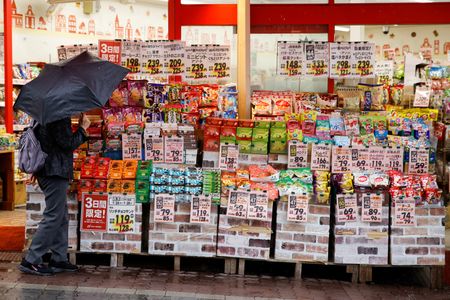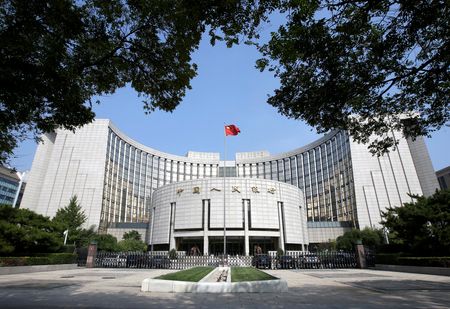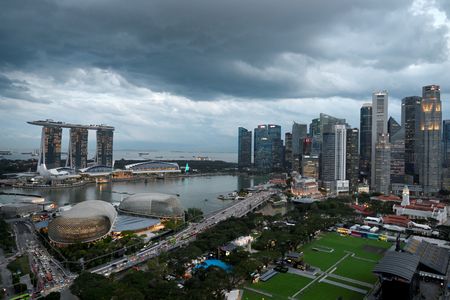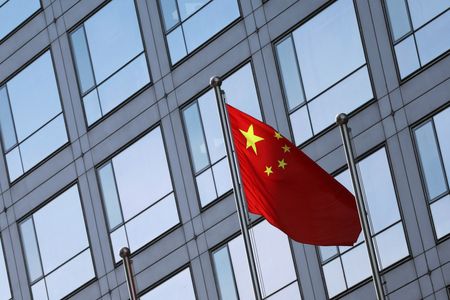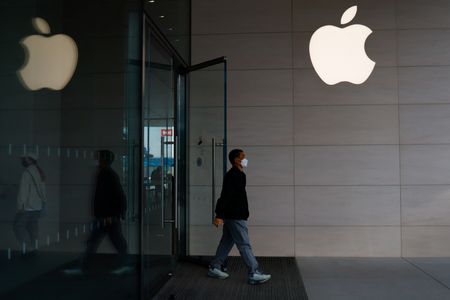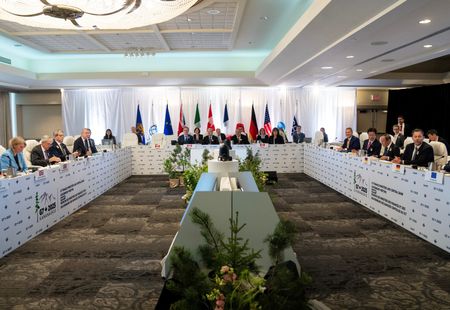By Leika Kihara
TOKYO (Reuters) -Japan’s core inflation accelerated at its fastest annual pace in more than two years in April on steady rises in food costs, data showed on Friday, raising the odds of another interest rate hike by year-end.
The data underscores the Bank of Japan’s predicament of balancing price pressures from persistent food inflation against growth headwinds from U.S. President Donald Trump’s tariffs.
The core consumer price index (CPI), which excludes fresh food but includes oil prices, rose 3.5% in April from a year earlier, exceeding market forecasts for a 3.4% gain and accelerating from a 3.2% increase in March.
It was also the fastest annual pace of growth for the index since the 4.2% rise in January 2023, holding above the central bank’s 2% target for more than three years.
“Underlying inflation remained strong in April despite the slashing of public high school fees,” said Marcel Thieliant, head of Asia-Pacific at Capital Economics.
“Our own view is that the persistent strength in inflation will convince the (BOJ) to hike interest rates yet again in October,” he said.
A Reuters poll, taken on May 7-13, showed most economists expect the BOJ to hold rates steady through September with a small majority forecasting a hike by year-end.
The latest uptick in inflation was driven mostly by a food price surge of 7.0% in a sign many companies hiked prices at the April start of Japan’s new fiscal year. The price of rice spiked 98.6% last month from a year earlier, while that of chocolate jumped 31%.
Another index stripping away both fuel and fresh food, which is scrutinised by the BOJ as a better gauge of demand-driven price pressure, rose 3.0% in April from a year earlier, the data showed. It accelerated from a 2.9% gain in March.
The BOJ ended a decade-long, massive stimulus programme last year and in January raised short-term interest rates to 0.5% on the view Japan was on the cusp of durably meeting its 2% inflation target.
While the central bank has signalled readiness to raise rates further, the economic repercussions from Trump’s tariffs forced it to cut its growth forecasts and complicated decisions around the timing of the next rate increase.
Governor Kazuo Ueda has said the timing for underlying inflation to converge towards the BOJ’s target has been pushed back somewhat due to “extremely high” economic uncertainty.
WAGE RISKS
While the data highlighted sticky price pressure, some analysts expect inflation to slow back near the BOJ’s target by year-end as the yen’s rally push down import costs.
The hit to growth from U.S. tariffs may also intensify later this year and discourage firms from hiking pay, casting doubt on whether Japan can achieve a wage-driven rise in prices – a key prerequisite for further rate hikes, analysts say.
Service-sector inflation moderated to 1.3% in April from 1.4% in March, a sign companies were slow in passing on rising labour costs, the CPI data showed.
Consumption remains stagnant as wage growth fails to catch up with inflation, a key factor that drove Japan’s economy into contraction in the first quarter.
“Shunto wage negotiations delivered a solid pickup in 2025, but with inflation cooling more slowly than hoped, those gains won’t go as far as they could,” said Stefan Angrick, an analyst at Moody’s Analytics, adding that U.S. tariffs will hurt growth.
“The Bank of Japan isn’t done hiking, but it’s not moving just yet. Tariff haze will keep the central bank on hold for the time being. We expect another rate hike in early 2026,” he said.
(Reporting by Leika Kihara; Editing by Sam Holmes and Shri Navaratnam)

